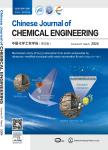Process intensification and energy saving of reactive distillation for production of ester compounds
Process intensification and energy saving of reactive distillation for production of ester compounds作者机构:School of Chemical Engineering and TechnologyHebei University of TechnologyTianjin 300130China National-Local Joint Engineering Laboratory for Energy Conservation of Chemical Process Integration and Resources UtilizationTianjin 300130China
出 版 物:《Chinese Journal of Chemical Engineering》 (中国化学工程学报(英文版))
年 卷 期:2019年第27卷第6期
页 面:1307-1323页
核心收录:
学科分类:0710[理学-生物学] 0830[工学-环境科学与工程(可授工学、理学、农学学位)] 081702[工学-化学工艺] 08[工学] 0817[工学-化学工程与技术] 081701[工学-化学工程] 0703[理学-化学]
基 金:Supported by the National Key Research and Development Program of China(2017YFB0602500) the Basic Research Program of Hebei Province(16964502D)
主 题:Reactive distillation Process intensification Process coupling Thermal coupling
摘 要:Reactive distillation(RD) process is an innovative hybrid process combining reaction with distillation, which has recently come into sharp focus as a successful case of process intensification. Considered as the most representative case of process intensification, it has been applied for many productions, especially for production of ester compounds. However, such problems existing in the RD system for ester productions are still hard to solve,as the removal of the water which comes from the esterification, and the separation of the azeotropes of ester–alcohol(–water). Many methods have been studying on the process to solve the problems resulting in further intensification and energy saving. In this paper, azeotropic–reactive distillation or entrainer enhanced reactive distillation(ERD) process, reactive extractive distillation(RED) process, the method of co-production in RD process, pressure-swing reactive distillation(PSRD) process, reactive distillation–pervaporation coupled process(RD–PV), are introduced to solve the problems above, so the product(s) can be separated efficiently and the chemical equilibrium can be shifted. Dividing-wall column(DWC) structure and novel methods of loading catalyst are also introduced as the measures to intensify the process and save energy.



